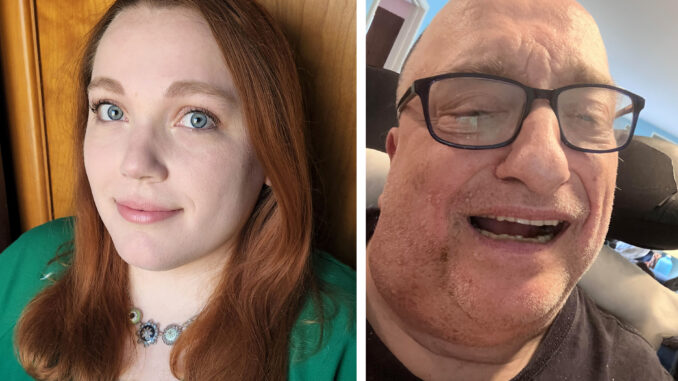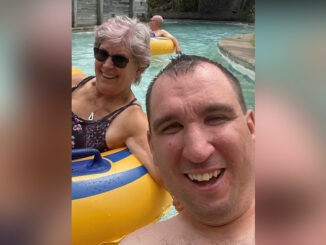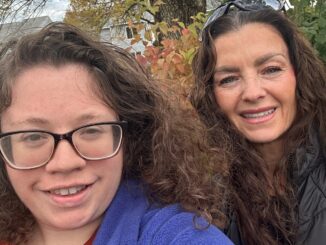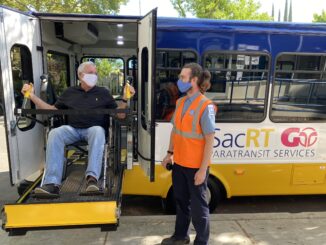
Innovative program empowers people with developmental disabilities with tailored assistive technology solutions
by Gail Allyn Short
Living on one’s own is a rite of passage many young adults look forward to. For people with developmental disabilities, that may be more complicated. They may need assistive technologies such as automated reminders, alarms, video monitoring, and voice recognition software to live safely in their own home.
Technologies like these can be expensive, and states do not always agree on which technologies are necessary for people to function autonomously and which ones are simply nice-to-haves and, therefore, ineligible for subsidies.
A new three-year pilot project called the Enabling Technology Housing Initiative aims to help people with disabilities in New York access more of the assistive technologies they want and need to live more independent lives.
“If someone calls and wants to have more control over their lighting or their doors or they have safety considerations within their home, we can meet with that person and run through the types of technology that are available.”
Erin Brunelle, Director of Client Services, Center for Assistive Technology at the University of Buffalo
“If you think about a person with an intellectual or developmental disability, sometimes all they need is to have some apps on their phone that will help them stay organized, help them remember what to do, give them the steps of a task, and that’s not currently being funded,” says Izel Steinmann Obermeyer, Chief Clinical Officer at the Westchester Institute for Human Development (WIHD) in Valhalla, N.Y. WIHD works to improve the lives of people with disabilities through services, professional education, and research.
There, Obermeyer is overseeing the pilot project with a $450,000 grant from the New York State Council on Developmental Disabilities (NYS CDD).
Obermeyer says traditional governmental programs such as Medicaid are more likely to deny funding for popular items like smart phones, virtual assistants and iPads, which have been proven to help some people with developmental disabilities increase or maintain their independence. The pilot project aims to identify which technologies are best at helping people live and function independently, she says.
To launch the project, WIHD selected three Technology-Related Assistance for Individuals with Disabilities (TRAID) program sites in New York.
At the program sites, people with disabilities can learn about various assistive technology devices, watch demonstrations, and even borrow the equipment for up to two months for free before buying. These sites offer training and technical assistance, too.
One site participating in the study is the Center for Assistive Technology (CAT) at the University of Buffalo. Erin Brunelle, the CAT’s Director of Client Services, explains, “If someone calls and wants to have more control over their lighting or their doors or they have safety considerations within their home, we can meet with that person and run through the types of technology that are available.”
For the WIHD project, professionals like those at the CAT are now gathering more specific details about each person’s goals, physical needs, tech experience, existing support systems, and which support systems they lack, she says.
Obermeyer says WIHD places no limitations on which technologies clients can try out. The study intends to produce a rigorous assessment tool for sites to use in the future to help provide sound justifications for the technologies that clients determine work best for them.
One client is Michael May, a 68-year-old man living in Buffalo, N.Y., who lives in a two-bedroom apartment with his girlfriend. May, who has cerebral palsy, says he is also legally blind and used to worry about operating his wheelchair safely.
“I needed sensors on my wheelchair so that I could, hopefully, avoid going off curbs when I’m out in the community,” he says.
May also owned an Amazon Alexa virtual assistant that he needed to modify so he could use it to control the lighting and other devices.
May discovered the WIHD pilot project two years ago when someone gave him a flyer. After he made contact, therapists from the CAT came to his apartment, looked around, and discussed how they could help, May says.
May says he now has sensors on his wheelchair.
“And it was at no cost to me,” says May. The WIHD project paid for the equipment through a grant from the CDD. Additionally, May says the Center helped him modify his Amazon Alexa, which lets him control lighting in the house.
Brunelle says, “It’s really exciting to be able to purchase and set up assistive technology for someone that increases their independence, without the funding barriers that are usually present.”
For more information about the New York State Council on Developmental Disabilities, go to https://cdd.ny.gov/. This program is supported by funding from the U.S. Department of Health and Human Services Administration for Community Living.



